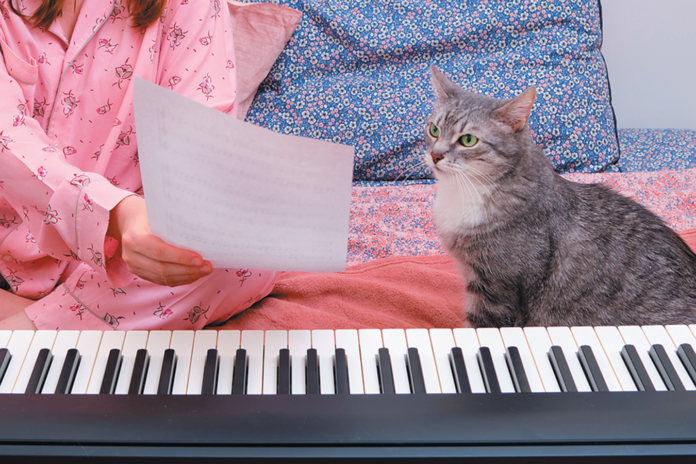We tend to think of “sit,” “shake hands,” and other tricks as things that dogs do. But cats can learn them, too, and many enjoy putting their inquisitive and active minds to work.
The younger the cat, the easier the training, but it’s certainly worth teaching middle-aged and older cats, too. You’ll get as much of a kick out of it as they will.
Start with sit
If you have never trained your cat to follow any cues from you, it’s best to begin with a simple one, like “sit.” Learning that word will help keep your pet from jumping into the lap of someone who doesn’t want the close attention, or from chasing your legs as if they were beams of light.
Begin by holding a treat just above your pet’s head. As his nose goes up to sniff it, his behind will automatically go down into a sitting position; you’re essentially luring him into place. At the very moment he sits, click a clicker (which you can buy at a party goods or pet store), and reward him with the treat and warm praise. The clicker helps because he will hear the sound even faster than you can proffer the treat, and that will keep him from becoming distracted. He will come to associate the clicker with the reward to follow.
After several days of teaching your cat this trick, add the word “sit” as you coax him with the treat. That way, he will learn that the reward comes only when you cue him to sit verbally. Otherwise, he will think that every time he sits, he’s entitled to a treat.
Other tricks, other tactics
From “sit” you can move on to other training tricks. Let’s say you want to show your pet how to do a “high 5.” For some cats, the way to start is to hold a treat inside a closed fist. Your curious cat will want to sniff. The second your cat lifts her paw even slightly off the floor, click and reward by letting her take the treat from your hand. Eventually she will get to the point that her paw touches your hand. When she is able to do that several times, add the “high 5” cue so she knows that she’s following your cue rather than the other way around. You don’t want her expecting a treat every time she gets it in her mind to high 5 you.
Different cats are going to need different tweaks to get the trick down right. Some may respond not to food but to a shiny or similarly enticing toy in your hand. Others may end up learning “fist bump” instead of “high five.” That’s okay. As long as you keep it fun and never show frustration or disappointment, you and your feline will enjoy the time together and develop a closer bond.
Follow these tips for more successful training.
- Never practice for more than 2 to 3 minutes at a time. Cats can get bored pretty quickly.
- Always finish on a positive note. Make sure the last thing you do is something your cat can easily respond to so that she receives praise and a treat.
- Keep treats tiny and non-
crumbly. If they’re too big or if your pet has to vacuum them up, her attention will waiver in the time it takes to eat the reward. - Speaking of treats, always train before, not after, meals. You want your cat’s motivation to remain high.
- As your cat’s skills improve, you can start giving treats as a reward sometimes instead of every time. She will have it down by rote and will not always need food to get her to comply.
- Don’t give up. If you remain calm without even a hint of vexation, your cat will be able to learn simple tricks that you’d like to teach.





My little buddy Kirby will do high fives as well as shake hands(paws) for treats. But ONLY for treats. If there is no food involved he simply ignores my attempts. He is extremely motivated by food but not much else.